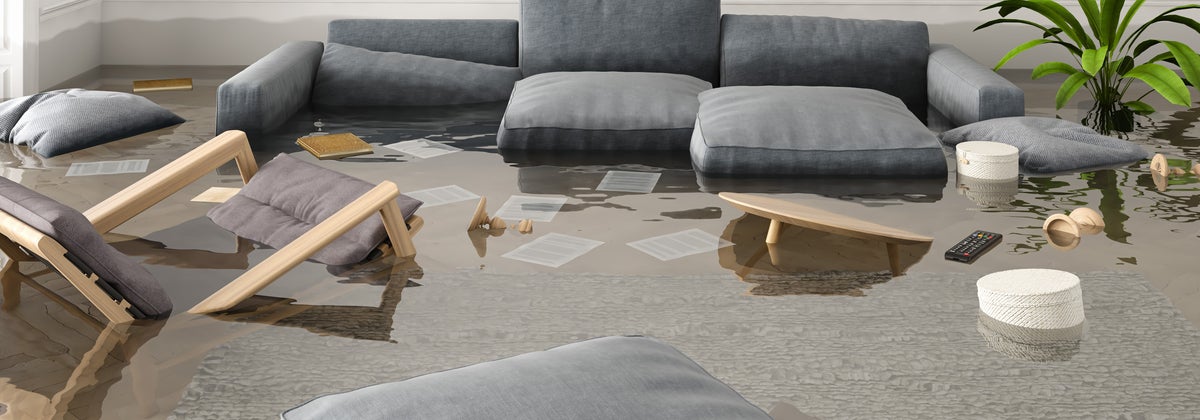New for old insurance, also known as replacement value insurance, is the most common type of contents insurance. It’s likely that when looking for an insurance policy you have seen this term show up, to varying degrees of cover. But what exactly is new for old contents insurance?
What is new for old insurance?
New for old insurance replaces your old item, regardless of age, with a new equivalent one.
For example, if your TV was worth $1000 when you purchased it five years ago, today, it’d be worth a lot less. Items depreciate over time and wear and tear take further value off the item. If you were to sell it, you wouldn’t be able to get back the $1000 you paid.
But with new for old insurance, if your TV was stolen or damaged beyond repair, it would get replaced with a brand new equivalent one. Regardless of how old your TV was, or any wear and tear it may have had.
That doesn’t mean you will get exactly $1000 for a new TV, but enough to get a new item that is similar. If you had a 32″ middle of the line smart TV, you would get a new, 32″ middle of the line smart TV. Depending on availability that may be the exact same model, or it may be the closest available one.
What are the other options?
The other main type of insurance has a variety of names, such as indemnity, market value or present value cover. This type of cover will only cover you for what the item was worth at the time it was stolen or damaged. The retail value minus the depreciation of the item along with any wear and tear.
In the example of the TV above, your TV would not be valued at the $1000 retail price. It would take into account the age of the TV, plus any wear and tear. In this case, you may find you are only covered for a few hundred dollars.
Think if you were to list the item on TradeMe, how much would it sell for? That’s roughly what you’d be looking at in terms of cover.
Why should I get new for old insurance?
The main reason to get this type of cover is that it protects against depreciation. Even though your TV is no longer worth the $1000 you paid, you can get another, new TV of a similar value. If you don’t have this cover, the payment you receive may not be enough to cover a replacement. If you only receive a few hundred dollars for your TV, can you really buy another one for this amount? You may find yourself having to buy items of lower quality or shopping second-hand.
New for old takes the stress out of the process. In the event you need to make a claim, you know you’ll be able to get a new item to replace the current one.

What else should I know?
Beware the premiums
New for old insurance is much more comprehensive and, as a result, more expensive. Present value cover will be significantly cheaper.
This is why some may choose present value cover. Even though it probably won’t fully cover them in the event they need to replace their contents, the premiums are significantly cheaper, so it’s a more affordable option. And the payout will still help ease the financial burden.
In reality, most contents insurance policies will include a mix of cover. This is usually made up of predominantly new for old cover, with certain items replaced at present value.
Know your policy
Every policy is different. Know your policy, so you know what you are covered for. Even if you have new for old cover, there is likely to be exclusions and restrictions. Don’t get caught out.
Sweat the small stuff
When calculating how much contents insurance you need, think of everything. All the little costs that add up, not just your big items. That includes your kitchen utensils and appliances, furnishings, bedding and linen.
Additionally, unless your policy is providing cover specifically for the present value of your items, you need to calculate not the cost of your items, but the cost to replace them in the present-day market.
Don’t expect any free upgrades (necessarily)
If your old 32″ plasma screen TV is stolen, don’t expect a new top of line 60″ 8K QLED TV to show up at your door. New for old is for equivalent items.
However, the replacement items do need to be new and, depending on the age of your items and the availability of replacements, an upgrade of sorts is possible. If you still have an old plasma TV, well, you’ll receive an LCD flat-screen to replace it. Simply because plasma screens are no longer available.
If you have an iPhone 6 (fresh out of 2014), you aren’t going to receive an iPhone 12 Pro Max as a replacement, but you may get an upgrade to some degree. Again, simply because you can’t buy an iPhone 6 new anymore.
This is a general rule, be sure to check with your policy provider. Don’t just insure your old items under the assumption you’ll get better ones should you need to make a claim. Many providers exclude items that incur high amounts of wear or depreciate quickly from new for old cover to avoid this issue.
Common exemptions
As mentioned above, many policies have exemptions. Usually, these are on household items that are particularly prone to wear and tear, or have shorter life spans, such as bedding, linen, clothing and footwear. It can also include sports equipment such as bicycles. Be sure to check for a full list of exclusions from your policy provider.
There can also be exemptions around the cause for the claim. Heavy rains and a burst pipe can both flood your house and destroy valuable contents. But your policy provider may not cover for both. Accidental damage may also be excluded, so if you kick over your TV doing some at-home yoga, you may be out of luck.
Look carefully at what type of cover you are getting. In some cases, you may have to pay extra for add-ons.
Get Specific
Unfortunately, you can’t just say you own your contents without any proof. When making a claim, you need to be able to provide some evidence for the items you owned. Now you don’t need to go and list the full specs of every item you have, but some evidence is needed. The more information the better (think receipts, photos, serial numbers etc.)
Do note that most policies have limits on certain items and require you to mention these specifically. If you have a $10,000 ring, your provider isn’t going to happily replace it because you can show them a photo of it. You need to mention it (and any other high-value items) when taking out your policy. It’s quite possible that you will need extra cover for these certain high-value items.
At the risk of being broken record here, check with your policy provider and read the terms and conditions carefully. Different providers have different requirements for proof of ownership, different terms and conditions, and different practices.
If you were to lose your possessions it would be an emotional and stressful experience, the last thing you’d need is an insurance headache.

Need home and contents insurance?
If you have a home, or contents, you should have home and contents insurance. There are policies available for renters, homeowners and landlords, so whatever your scenario you can find a policy that works for you. Here at Canstar, we take a lot of the hard work out, by comparing home and contents insurance providers so you can find the best deal. Click the button below to learn more and to start comparing home and contents providers.
Compare home and contents insurance

About the author of this page
This report was written by Canstar Content Producer, Andrew Broadley. Andrew is an experienced writer with a wide range of industry experience. Starting out, he cut his teeth working as a writer for print and online magazines, and he has worked in both journalism and editorial roles. His content has covered lifestyle and culture, marketing and, more recently, finance for Canstar.
Enjoy reading this article?
You can like us on Facebook and get social, or sign up to receive more news like this straight to your inbox.
By subscribing you agree to the Canstar Privacy Policy








Share this article